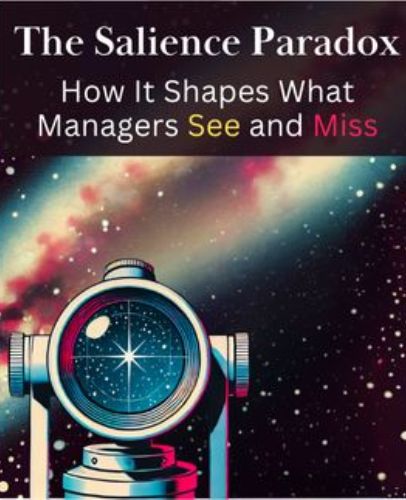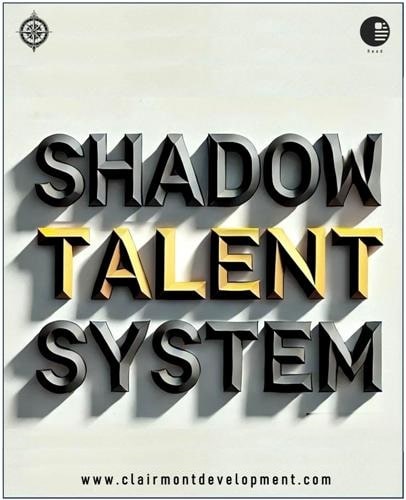Sustainable Organizational Advantage: why certain firms outshine their competitors in the same industry?
A Look at RBV and Career Capital
I was recently reading “Chasing Stars: The Myth of Talent and the Portability of Performance” by Boris Groysberg. In the book he states, “For sustainable advantage, a resource needs to be 1) valuable, 2) rare, 3) imperfectly imitable, and 4) imperfectly mobile.
Further into the book, Groysberg elaborates on this by categorizing employees themselves as key organizational resources, a perspective rooted in the Resource-Based View (RBV) of strategic management.
RBV, A Story of Strategy and Resources
RBV developed during the 1980s as academics sought to understand why some firms perform better than others despite being in the same industry?
Although it has received some criticism for being too inwardly focused, it nevertheless presents an interesting approach look at the human “resources” within an organization.
While RBV offers an inward look at why certain firms outshine their competitors by evaluating organizational assets, let’s see how this framework could intertwine with Career Capital. The theory delves into the strategies individuals employ to forge their own definitions of a successful career.
The RBV and Career Capital Theory can be integrated to provide a comprehensive understanding of how individuals can manage and leverage their personal competencies, networks, and knowledge within an organizational context to achieve career success.
RBV focuses on the firm’s perspective, analyzing how internal resources can create sustained competitive advantage.
In contrast, Career Capital Theory looks at it from an individual’s perspective, focusing on the resources a person accumulates and utilizes to enhance their career path.
It specifically looks at three key areas: Knowing Why (experience), Knowing What (skills), and Knowing Who (network).
When organizations consider employees as ‘’resources’’, it prompts several important considerations. To appropriately leverage resources you need to understand the capabilities and usage.
Let’s look at how these RBV and Career Capital complement each other and how organizations can leverage them to gain a competitive advantage.
Valuable: Harnessing the Strategic Potency of Human Capital
Organizational resources prove valuable when they enable a firm to implement strategies that enhance efficiency and effectiveness. Individuals who have accumulated significant Career Capital bring essential skills, expertise, and relationships that contribute to increased productivity, creativity, and leadership. These capabilities provide value to employers by enhancing their strategic positioning and operational performance.
To fully leverage this value, organizations must assess employee performance with the same scrutiny applied to their physical and financial assets. However, some organizations leave employee assessment up to subjective judgements resulting in misallocation and inefficiencies.
Rare: Cultivating Unique Talent in a Competitive Advantage
Resources are considered rare if they are not widely available to organizations or are difficult to acquire in the job market. Employees who build unique skills through specialized training, challenging projects, and distinctive experiences create a rare combination of talents.
This unique mix of expertise and perspectives is invaluable to organizations aiming to achieve their strategic goals. Given the subjective nature of performance assessment, it is crucial for individuals to proactively communicate and clarify their unique value to ensure it is recognized and appreciated.
Imperfectly Imitable: Protecting Unique Employee Contributions
A resource’s value is significantly enhanced when it cannot be easily duplicated by competitors, often due to unique historical conditions, intricate social relationships, or causal ambiguity.
Career Capital includes knowledge and experience gained through specific career paths, relationships, and networks. It is challenging to replicate these resources because they often result from unique combinations of personal history, work culture, and social capital.
Organizations consider how they can create intentional experiences that provide distinct opportunities for employees to develop expertise that can be leveraged to meet organizational goals. This could be stretch assignments, secondments, internal mobility aligned to the organization’s needs.
These imperfectly imitable attributes provide organizations with a robust competitive edge, rooted in the deep-seated, unique capabilities and insights of their employees. Ensuring that these qualities are nurtured and protected from emulation involves strategic foresight and a commitment to maintaining a culture that promotes continuous learning and innovation.
Imperfectly Mobile: Keeping Talent Engaged and Productive
Resources are imperfectly mobile if they cannot be easily transferred between individuals or organizations without losing value. Individuals with high Career Capital have deep-rooted expertise and networks tailored to their current organization.
Their deep integration and unique understanding of organizational culture mean that their full value may not be transferable to a different firm without some loss of productivity.
Unlike other resources, employees possess personal agency and the ability to transition freely between organizations, posing challenges for talent retention. To counter this, it is essential for organizations to cultivate an environment that not only presents challenges but also values each individual, making employees “imperfectly mobile.”
This strategy diminishes the appeal of external opportunities and promotes internal mobility. By strategically utilizing human resources to maximize internal opportunities, organizations can ensure employees find fulfilling career paths within their existing structure. Such strategic deployment is crucial for retaining key talent, whose skills are in high demand in the competitive market.
Conclusion
Organizational competitiveness hinges on recognizing and nurturing the critical nature of human resources. Organizations that support the growth of individual career capital not only enhance their employees’ career success, but also bolster their own resource base, thereby strengthening their competitive position. When organizations and employees unite in the goal of enhancing value rather than exploitation, it creates a powerful synergy that drives collective success and sustainable growth.
Programs like Building Career Capital for High-Potential Employees (HIPOs) are designed to specifically hone the crucial areas of Knowing Why (experience), Knowing What (skills), and Knowing Who (network). This targeted development ensures individuals are not only prepared to navigate but also to thrive in today’s dynamic work environment, directly enhancing the strategic capabilities of their organizations.
Click below to read Building Career Capital program for HIPO development in the GCC region
Sustainable Organizational Advantage: why certain firms outshine their competitors in the same industry?
A Look at RBV and Career Capital
I was recently reading “Chasing Stars: The Myth of Talent and the Portability of Performance” by Boris Groysberg. In the book he states, “For sustainable advantage, a resource needs to be 1) valuable, 2) rare, 3) imperfectly imitable, and 4) imperfectly mobile.
Further into the book, Groysberg elaborates on this by categorizing employees themselves as key organizational resources, a perspective rooted in the Resource-Based View (RBV) of strategic management.
RBV, A Story of Strategy and Resources
RBV developed during the 1980s as academics sought to understand why some firms perform better than others despite being in the same industry?
Although it has received some criticism for being too inwardly focused, it nevertheless presents an interesting approach look at the human “resources” within an organization.
While RBV offers an inward look at why certain firms outshine their competitors by evaluating organizational assets, let’s see how this framework could intertwine with Career Capital. The theory delves into the strategies individuals employ to forge their own definitions of a successful career.
The RBV and Career Capital Theory can be integrated to provide a comprehensive understanding of how individuals can manage and leverage their personal competencies, networks, and knowledge within an organizational context to achieve career success.
RBV focuses on the firm’s perspective, analyzing how internal resources can create sustained competitive advantage.
In contrast, Career Capital Theory looks at it from an individual’s perspective, focusing on the resources a person accumulates and utilizes to enhance their career path.
It specifically looks at three key areas: Knowing Why (experience), Knowing What (skills), and Knowing Who (network).
When organizations consider employees as ‘’resources’’, it prompts several important considerations. To appropriately leverage resources you need to understand the capabilities and usage.
Let’s look at how these RBV and Career Capital complement each other and how organizations can leverage them to gain a competitive advantage.
Valuable: Harnessing the Strategic Potency of Human Capital
Organizational resources prove valuable when they enable a firm to implement strategies that enhance efficiency and effectiveness. Individuals who have accumulated significant Career Capital bring essential skills, expertise, and relationships that contribute to increased productivity, creativity, and leadership. These capabilities provide value to employers by enhancing their strategic positioning and operational performance.
To fully leverage this value, organizations must assess employee performance with the same scrutiny applied to their physical and financial assets. However, some organizations leave employee assessment up to subjective judgements resulting in misallocation and inefficiencies.
Rare: Cultivating Unique Talent in a Competitive Advantage
Resources are considered rare if they are not widely available to organizations or are difficult to acquire in the job market. Employees who build unique skills through specialized training, challenging projects, and distinctive experiences create a rare combination of talents.
This unique mix of expertise and perspectives is invaluable to organizations aiming to achieve their strategic goals. Given the subjective nature of performance assessment, it is crucial for individuals to proactively communicate and clarify their unique value to ensure it is recognized and appreciated.
Imperfectly Imitable: Protecting Unique Employee Contributions
A resource’s value is significantly enhanced when it cannot be easily duplicated by competitors, often due to unique historical conditions, intricate social relationships, or causal ambiguity.
Career Capital includes knowledge and experience gained through specific career paths, relationships, and networks. It is challenging to replicate these resources because they often result from unique combinations of personal history, work culture, and social capital.
Organizations consider how they can create intentional experiences that provide distinct opportunities for employees to develop expertise that can be leveraged to meet organizational goals. This could be stretch assignments, secondments, internal mobility aligned to the organization’s needs.
These imperfectly imitable attributes provide organizations with a robust competitive edge, rooted in the deep-seated, unique capabilities and insights of their employees. Ensuring that these qualities are nurtured and protected from emulation involves strategic foresight and a commitment to maintaining a culture that promotes continuous learning and innovation.
Imperfectly Mobile: Keeping Talent Engaged and Productive
Resources are imperfectly mobile if they cannot be easily transferred between individuals or organizations without losing value. Individuals with high Career Capital have deep-rooted expertise and networks tailored to their current organization.
Their deep integration and unique understanding of organizational culture mean that their full value may not be transferable to a different firm without some loss of productivity.
Unlike other resources, employees possess personal agency and the ability to transition freely between organizations, posing challenges for talent retention. To counter this, it is essential for organizations to cultivate an environment that not only presents challenges but also values each individual, making employees “imperfectly mobile.”
This strategy diminishes the appeal of external opportunities and promotes internal mobility. By strategically utilizing human resources to maximize internal opportunities, organizations can ensure employees find fulfilling career paths within their existing structure. Such strategic deployment is crucial for retaining key talent, whose skills are in high demand in the competitive market.
Conclusion
Organizational competitiveness hinges on recognizing and nurturing the critical nature of human resources. Organizations that support the growth of individual career capital not only enhance their employees’ career success, but also bolster their own resource base, thereby strengthening their competitive position. When organizations and employees unite in the goal of enhancing value rather than exploitation, it creates a powerful synergy that drives collective success and sustainable growth.
Programs like Building Career Capital for High-Potential Employees (HIPOs) are designed to specifically hone the crucial areas of Knowing Why (experience), Knowing What (skills), and Knowing Who (network). This targeted development ensures individuals are not only prepared to navigate but also to thrive in today’s dynamic work environment, directly enhancing the strategic capabilities of their organizations.
Click below to read Building Career Capital program for HIPO development in the GCC region










